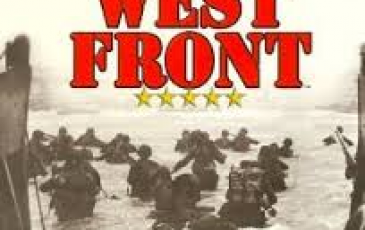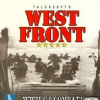| Rating: |
0 (0) |
| Games Played: |
1 |
| SM: |
8 |
| Turns: |
40 |
| Type: |
Custom |
| First Side: |
Allies |
| Second Side: |
Axis |
| Downloads: |
656 |
Salerno - British Landings 2012 version - a dawn attack. Good for Extreme Assault rule.
A vast armada had been
sailing from Africa towards Italy with a general heading of Naples
- Salerno. Field Marshall Kesslering was well aware of this
armada and was preparing for the landings as well as he could
without knowing the precise destination. As it became clear
to Kesselring that the armada was heading to Salerno, he intensified
the preparation of beach defenses on the sweeping crescent moon
gulf from Vietri north of Salerno down to Agropoli. On 8 September
the allies finalized an armistice with the Italians to coordinate
with the landings at Salerno and the germans' fears were realized
less than 24 hours prior to the start of Operation Avalanche.
The codeword Achse ("Axis") was issued, which called for the
immediate disarmament of all Italian troops, including the 222nd
Coastal Battalion manning the Salerno beaches. It was a blow
to Kesselring's defense plans and also to his faith in the Italian
leadership. The betrayal left Kesselring with only the 16th
Panzer Division to cover the entire 36 miles of the bay. The
British plan called for two infantry divisions to land on 3 beaches
with a 7 mile gap separating them from the American landings
at Paestum. The 46th Division was to land northern most at Uncle
Beach with the objective of seizing Salerno and the mountains
above it. They were to land two battalions of the 128th Brigade
(1/4 Hampshires, 2 Hampshires) with the 5 Hampshires to follow.
The 56th Division was to land 2 brigades side by side on Sugar
Beach and Roger Beach. The 169th Brigade would lead with the
2/6 Queens and the 2/7 Queens with the 2/5 Queens to follow.
The 167th Brigade would lead with the 8 Royal Fusiliers and
9 Royal Fusiliers to be followed by the 7th Oxford and Buckinghamshire
Light Infantry. Tanks from the Royal Scots Greys would be landed
in support if possible. The 56th Division was charged with seizing
the critically important Montecorvino Airfield to allow fighter
support (mostly British Seafires at first) to operate locally
instead of flying from Sicily and aircraft carriers. They were
also to press onwards to take the important rail and road junction
of Battipaglia and then to push inland to seize the key mountain
passage of Ponte Sele. Kesselring had created 8 fortified strongpoints
from Agropoli in the south to Salerno in the north. There were
3 Kampfgruppe to cover this area and a fourth made up of the
16th Reconnaisance Battalion to watch the plains north of Salerno.
Kampfgruppe Stempel was to bear the brunt of the British landings
with armored support from Kampfgruppe von Holtey. 88mm AA guns
were strategically placed in the majestic hills overlooking the
bay and an unusually generous amount of Luftwaffe air support
would fly unchecked in the early stages of the landings. The
whole operation began at around 3:15am when British destroyers
opened up a bombardment with their 4.7 inch guns and then Landing
Craft Rockets (LCR's) laid down some fearsome rocket attacks
on the beaches to blow the heavy minefields and soften up enemy
resistance. Smoke was very instrumental in getting the troops
onto shore under the withering fire they faced. They would pay
a heavy price for their progress, but the germans were stretched
thin and fought desperately to check the initial advance and
hold their commanding positions in the mountains that had a crystal
clear view of the entire plain. This was to be a major conflict
with both sides desperately fighting to save the day.
























